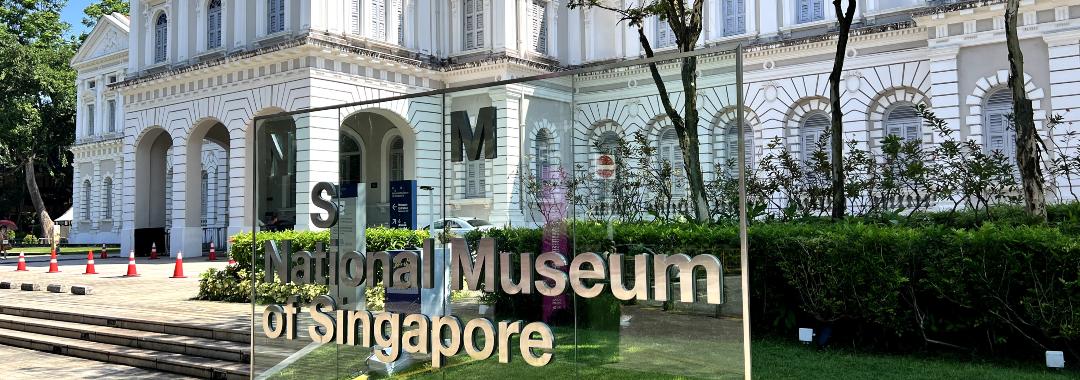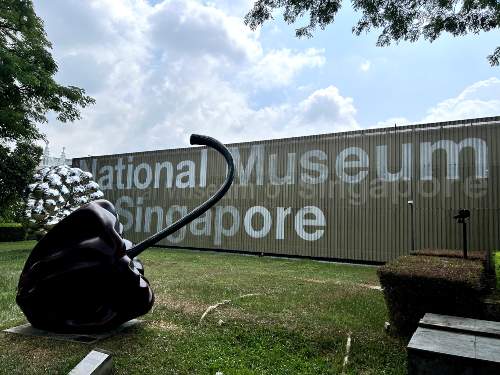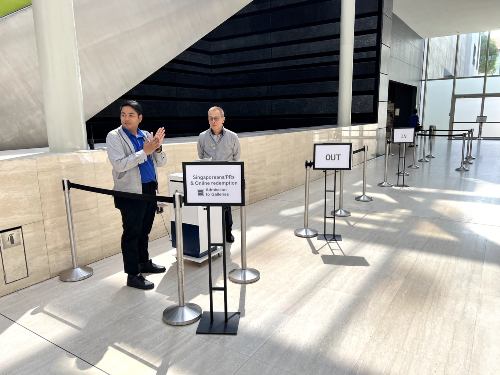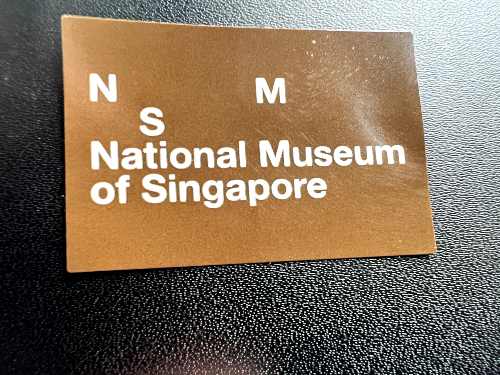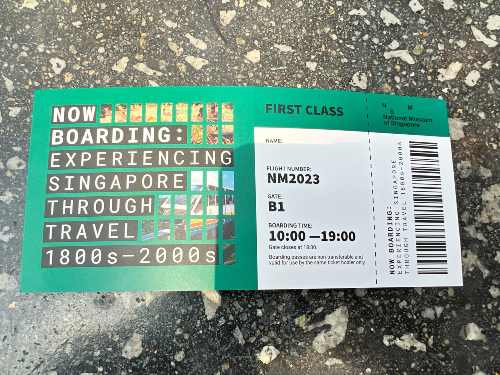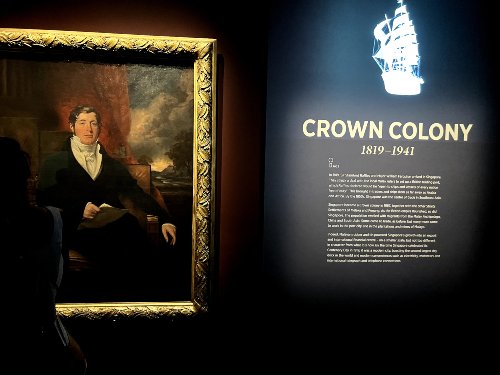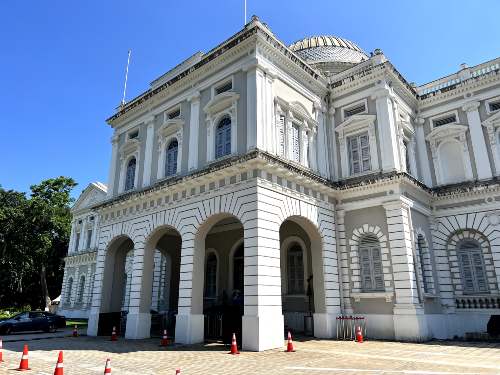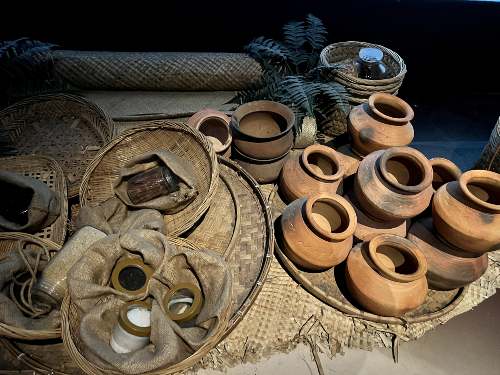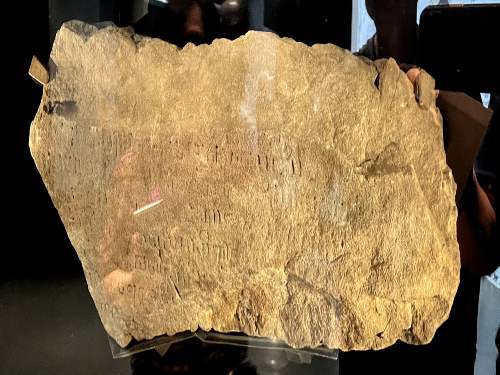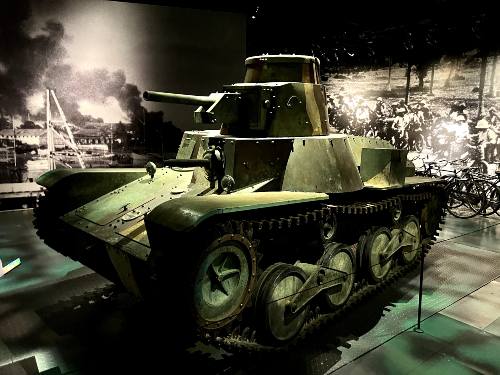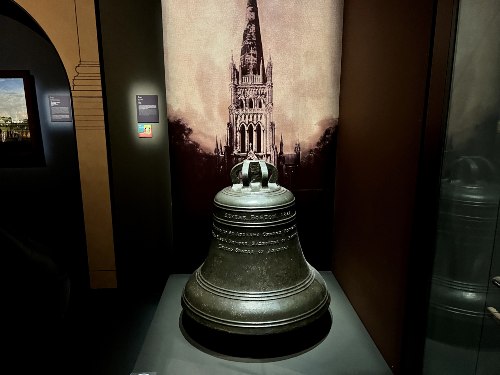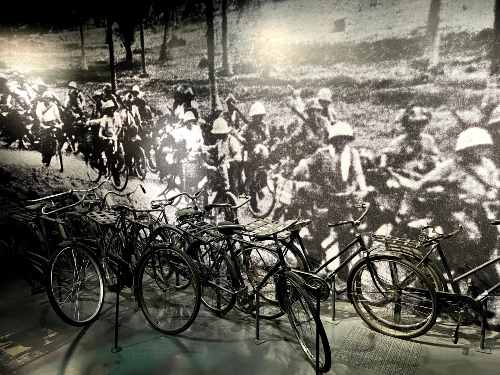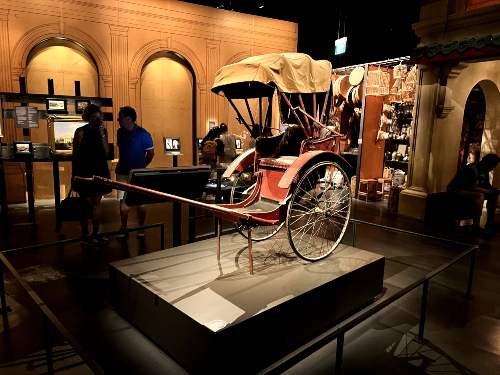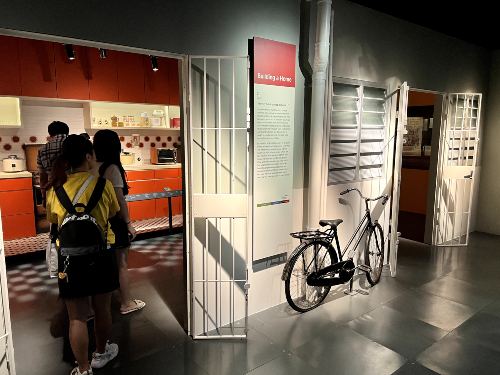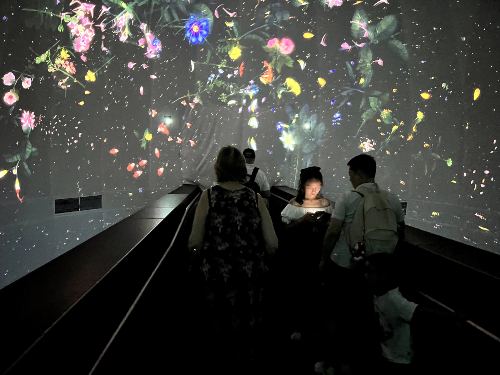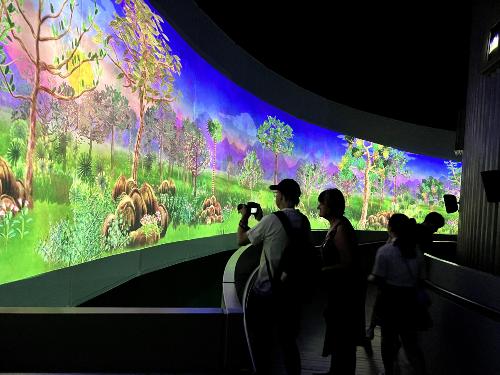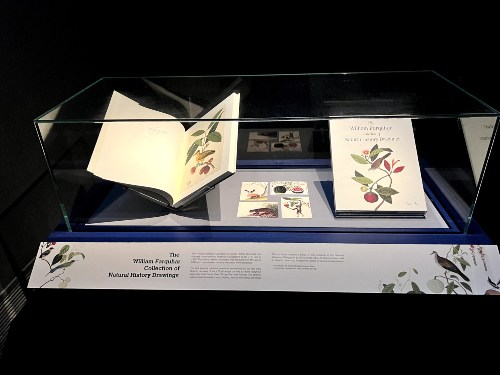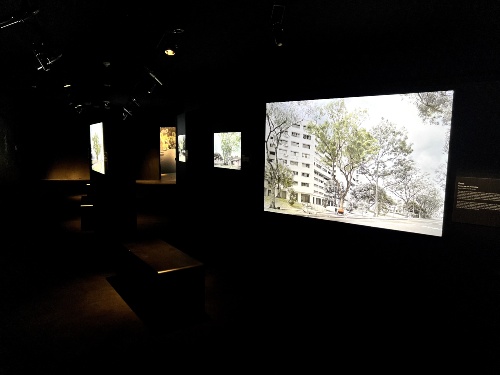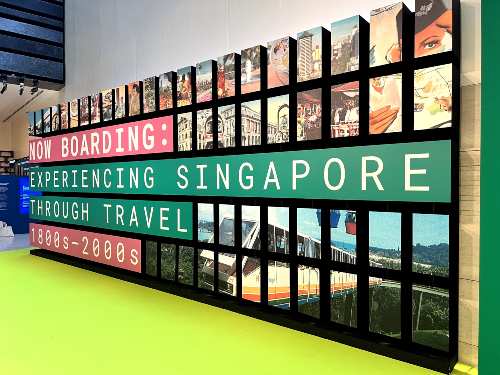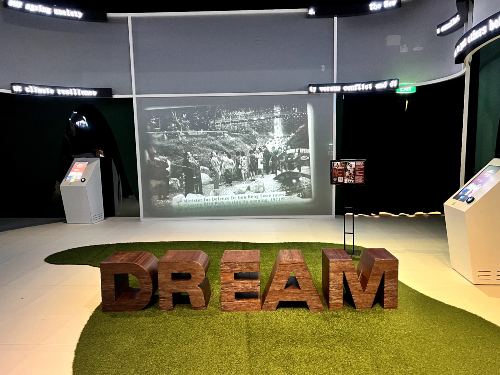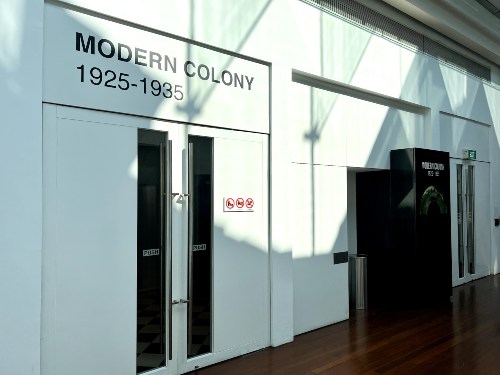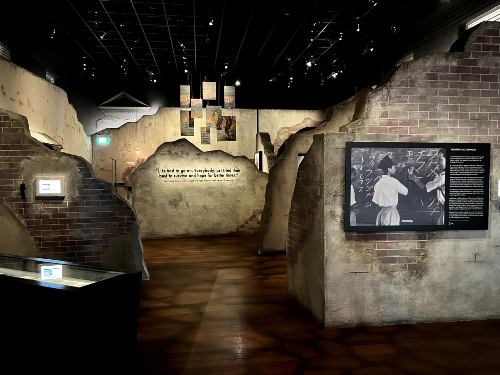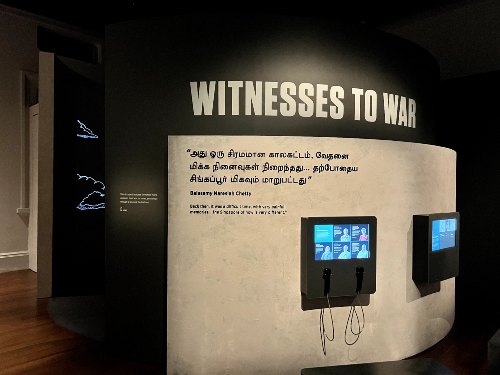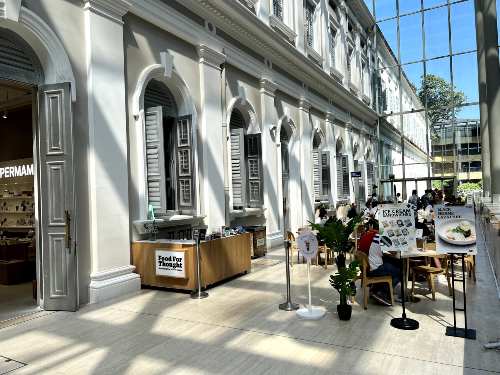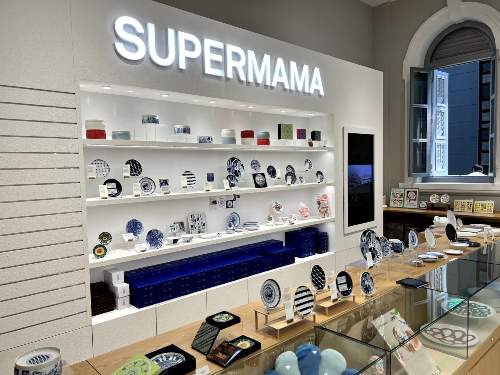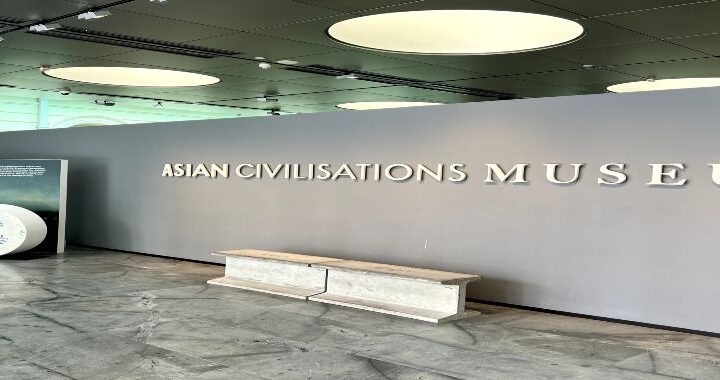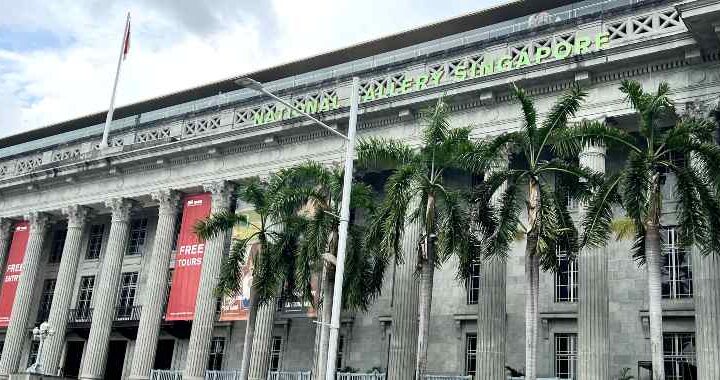- Getting to the National Museum of Singapore
- Visitor Centre At the National Museum Of Singapore
- History Of the National Museum of Singapore
- Change Of Name To The National Museum Of Singapore
- Architectural Style Of the National Museum Of Singapore
- Expansion And Evolution Of National Museum Of Singapore
- Current Day National Museum Of Singapore
- Retail And F&B
- Admission To the National Museum of Singapore
- Places Of Interest Near National Museum Of Singapore
- Other Recommended Attractions And Tours
The National Museum of Singapore is a treasure trove of the history and culture of Singapore. It is the oldest museum in Singapore, founded in 1849, and it has a collection of over 1 million artefacts that tell the story of Singapore from its founding to the present day.
Visitors can explore the museum's permanent galleries and a variety of temporary exhibitions, which explore a wide range of topics, from art and culture to history and science.
The National Museum of Singapore building at Stamford Road was gazetted as a National Monument on 14 Feb 1992.
Getting to the National Museum of Singapore
Address: 93 Stamford Road, Singapore 178897 (Map).
There are a few ways to get to the National Museum of Singapore.
MRT: Dhoby Ghaut (NE6, NS24, CC1) and Bras Basah (CC2), and Bencoolen (DT21)are the nearest MRT stations. Walking to the National Museum of Singapore takes five minutes or less.
Public Buses: The nearest bus stop is B04121, along Stamford Road. Many public buses are plying this stop: 77, 106, 167, 190, 857, 124, 7, 14, 16, 36, 111, 131, 147, 162M, 166, 174, 175.
Taxis / Ride-Hailing Cars: As the National Museum of Singapore is located near the Orchard Road shopping belt, you can quickly get there by taxi or ride-hailing cars, although this will be more expensive.
Visitor Centre At the National Museum Of Singapore
Upon reaching the main entrance, tourists can queue up and buy entry tickets to the museum.
Singaporeans and Permenant-Residents can proceed further into the main building to queue for their tickets. A sticker and entry pass to the ad hoc exhibitions will be given upon successfully using their Identity Card to scan for entry. Ensure you have these before entering the exhibits, as the staff will ask if they don't see the stickers.
History Of the National Museum of Singapore
The National Museum of Singapore is the nation's oldest museum. The museum has a rich and interesting history and has undergone several changes. It was established in 1849, although the idea was first mooted by our founding father, Sir Stamford Raffles, in 1823. Nothing much came out of it when he left for home on 9 Jun 1823.
Museum Within A Library
In 1849, the governor gifted two ancient gold coins from the Temenggong of Johor to the Singapore Library. The library was located in the Singapore Institution, now Raffles Institution.
Singapore Libary was recently converted from a private library to a public one on 22 Jan 1845. Before that, it was called Singapore Institution Library, operated as a private enterprise with paid monthly subscription fees collected from the members. It became the first public library in Singapore after the conversion.
The library was still operating on a paid subscription model after going public. The lowest subscription fee of $1/month was only introduced in 1848 as a fourth class with reduced privileges. The majority of the library's books were donated.
A small museum was set up in the Singapore Library after the donation from the governor. This marked the museum's beginning. The librarian's responsibilities were expanded to include the role of curator. Unfortunately, not much was done to develop the museum after this initial burst of enthusiasm.
Relocation Of Singapore Library
In Sep 1862, Singapore Library and the museum were relocated to the Town Hall (present-day Victoria Theatre and Concert Hall), where the museum occupied the lower rooms. In the same year, it was discovered that the library was operating at a loss, and the museum was offered three rooms on the upper floor.
In 1873, a committee was set up to organise exhibitions of colonial products. This was an initiative to be launched in different colonies across the British Empire. In Singapore, this led to discussions for a government-supported, purpose-built museum.
On 1 Jul 1874, the colonial government assumed control of the struggling Singapore Library. It was renamed the Raffles Library and Museum within the same period and reopened its doors on 14 Sep of the same year. Initially, The committee focused on building the library, and the museum did not get much support.
Two years later, in Dec 1876, the Raffles Library and Museum were reunited with Raffles Institution when they temporarily moved back to the latter's premises.
Final Destination Of The National Museum
During the early 1880s, the Singapore municipality initiated discussions about constructing a distinct Raffles Library and Museum edifice. The chosen location for this new structure was the current site of the National Museum, and building work commenced in 1884.
Three years later, in 1887, the building was completed, and Governor Frederick Weld inaugurated the museum.
Since then, the national museum has remained in the location except for a brief period between 20023 and 2006, when it was located at Riverside Point at Clarke Quay for redevelopment work.
Change Of Name To The National Museum Of Singapore
The National Museum of Singapore started as a section in the Singapore Library. Over the years, it has changed its name before settling on the current name.
It was renamed Raffles Library and Museum on 16 Jul 1874 after the colonial government took over the management. In 1960 the museum was separated from the library, and its name was formally changed from Raffles Museum to National Museum to reflect Singapore's identity. In 1993, the Singapore History Museum was renamed to emphasize the focus on Singapore's history.
Finally, in 2006, the museum was officially named the National Museum of Singapore after the building completed its redevelopment. This reflected the museum's renewed focus on Singapore's history and culture and its expanded role as a national institution.
Architectural Style Of the National Museum Of Singapore
The National Museum of Singapore was built in the Neo-Palladian style of architecture, complemented by the neo-classical style in some parts.
In 1887, the Colonial Engineer Henry E. McCallum designed the front block of the museum, which possesses a symmetrical facade, pediments above the windows, and columns and pilasters.
The building's neoclassical style is evident in its design, with Doric columns and pilasters on the ground level, as well as large triangular pediments at each end of the front block adorned with the coat of arms of Queen Victoria. Further complementing the neoclassical aesthetic are Ionic pilasters on the second level. The building's ample ventilation in tropical Singapore is ensured by neat rows of large windows, even before the invention of air-conditioning.
The rotunda of the building is rather impressive, featuring a dome towering at 27 meters high and adorned with fish-scale tiles. The dome is designed with coloured glass panels and arched windows that allow natural light to illuminate the inside of the building.
Specific Features Of The National Museum Of Singapore
Below are more details about the architectural style of the National Museum of Singapore
Symmetrical Façade
The museum's façade is symmetrical, with two identical wings flanking a central entrance. This gives the building a sense of balance and order.
Pediments
The windows on the museum's façade are topped with pediments. Pediments are triangular or semi-circular structures that are often used to decorate buildings in the Neoclassical style.
Columns and Pilasters
The museum's façade is adorned with columns and pilasters. Columns are vertical supports that are often used in classical architecture. Pilasters are shallow columns that are attached to a wall.
Rotunda
The museum's rotunda is a circular space with a domed ceiling. The rotunda is a central space in the museum used for temporary exhibitions and events.
Fish-Scale Tiles
The dome of the rotunda is covered with fish-scale tiles. These tiles are made of ceramic, and they are arranged in a pattern that resembles fish scales.
Expansion And Evolution Of National Museum Of Singapore
On October 12, 1887, the Straits Settlements Governor, Frederick Weld, inaugurated Raffles Library and Museum to primarily house zoological specimens and document the natural history of Singapore and the surrounding region. But its focus will be changed over the years due to the challenges faced by the museum and Singapore.
Early Challenges
The library and museum faced numerous challenges initially at its new location. The zoological specimens were affected by mould, and termites made a roof section unstable. Furthermore, the exhibits were covered in dust from the streets as the building's windows were not glazed.
Expansion Of The Museum
Despite these initial challenges, the museum managed to thrive. By 1910, it had become a well-respected institution. Its collection of specimens and artefacts from various fields, including zoology, botany, geology, ethnology, and numismatics, was vast and impressive.
The Raffles Library and Museum's growth could also be attributed to Karl R. Hanitsch, who was the curator and director of the Raffles Library and Museum from 1895 to 1919. Hanitsch, a German-born entomologist, started a Singapore history collection comprising portraits, plans and photographs of old Singapore.
The museum's collection had grown so large that there were proposals to build an enormous museum in another location. However, the museum's central location was considered ideal, and the relocation plan was eventually abandoned. Instead, a parallel block was constructed behind the museum. It was officially opened in Feb 1907. This new annexe housed the museum's zoological collection.
In 1916, a library wing was added in the western section of the museum. The architecture of these extensions was consistent with that of the original museum block.
Post Independence
In 1960, the Raffles Museum became independent from the library and was renamed the National Museum. After Singapore gained independence in 1965, the museum adjusted its focus to showcase Singapore's culture and history.
In 1972, the museum's zoological exhibits were moved to the zoology department of the University of Singapore (now known as the National University of Singapore) to allow the museum to concentrate solely on Singapore's history, culture, and art.
Current Day National Museum Of Singapore
The National Museum of Singapore showcases Singapore's rich history, culture and people through its impressive collection of artefacts and documents. The exhibits range from traditional displays to interactive installations. We can classify the museum exhibition into Permanent or Limited-time exhibitions.
Permanent Exhibitions In the National Museum Of Singapore
These are the evergreen and ever-popular exhibitions in the national museum.
Singapore History Gallery
The Singapore History Gallery is a must-visit for anyone interested in learning about the history of our island nation. The gallery charts the development of Singapore from its earliest days as a trading port to its current status as a modern metropolis. The gallery is divided into four main sections.
Stepping into the gallery, visitors are greeted by the giant map drawn by Abraham Ortelius' 1570 map of Southeast Asia and the East Indies. It is fascinating and one of the most significant maps in the museum's collection, as it is one of the earliest maps to depict Singapore.
The map was created by Abraham Ortelius, a Flemish cartographer and geographer considered the father of modern cartography. Ortelius' map was based on the latest cartographic information available at the time and was highly accurate for its era if you compare it with current maps.
The map shows Singapore on the Malay Peninsula's southern tip and is called "Cincapura," which is the Malay name for Singapore. The map also shows the surrounding islands, including Sumatra, Java, and Borneo.
In addition to its geographical accuracy, the Ortelius map is notable for its artistic elements reflecting the creativity of the cartographer. The map is decorated with mermaids, sea monsters, and other fantastical creatures. These creatures were not intended to be realistic depictions of the natural world, but they were meant to add to the map's visual appeal and to remind viewers of the dangers of sailing in the region.
The Ortelius map is a valuable historical document that provides a glimpse into Southeast Asia in the 16th century. It is also a beautiful and fascinating work of art. Check out this vital map if you visit the National Museum of Singapore.
Singapura (1299-1818)
This section explores the early history of Singapore, from its founding as a Malay settlement to its transformation into a thriving port city. In this section, you will see The Singapore Stone, which is believed to date back to the 13th century and possibly as early as the 10th or 11th century. The inscription is written in Kawi with some Sanskrit words bearing an undeciphered inscription.
The Singapore Stone is a fragment of a large sandstone slab that initially stood at the mouth of the Singapore River but was blown up by the British to widen the mouth of the Singapore River in 1843. Three pieces were sent to the Royal Asiatic Society's museum in Calcutta, India, for analysis. At the same time, one of the fragments was saved by Lieutenant-Colonel Low, who later returned it to what was then the Raffles Museum.
There is also a multimedia account by Chinese Trader Wang Dayan about Danmaxi (Temasek) and Life at Longyamen (龙牙门 or Dragon's Teeth Gate), probably the strait between Sentosa and Labrador Point in Telok Blangah during the mid-14th century.
A small section was also dedicated to the arrival of the Europeans when the Portuguese and Dutch reached Singapore to secure their demand for spices. The Portuguese and Dutch struggled with the Malays, Acehnese and Bugis for two centuries to control trade along the Strait of Malacca.
Crown Colony (1819-1941)
This section tells the story of Singapore's time as a British colony, from its rapid growth up to the occupation by the Japanese during World War II.
The gallery showcases the history of Singapore, from the arrival of Sir Thomas Stamford Bingley Raffles to the transformation of Singapore into a free port to compete with the Dutch. The exhibit also highlights Singapore's transition to a British Crown colony, trade growth after the Suez Canal's opening and steamship invention.
We also glimpse European families living in Singapore at the time and how their households were managed. Prominent business people who contributed to society, like Tan Kah Kee, Dr Lim Boon Yang, Tan Tock Seng, etc., are also featured. Additionally, the gallery has artefacts and images of issues faced during that period, such as opium and opium houses, as well as The Singapore Mutiny in 1915.
The original Revere Bell, presented by Maria Revere Balestier to the Church of St Andrew, is also on display here.
Syonan-To (1942-1945)
The gallery tells the story of Singapore's darkest chapter when the Japanese renamed Singapore to Syonan-To (Light of the South) during World War II. The gallery explores the harsh realities of life under Japanese occupation, from the fall of Singapore in 1942 to the island's liberation in 1945.
Syonan-To Gallery starts with the narrative of the British's Singapore Strategy to fortify Singapore and make it The Gibraltar of The East. Unfortunately, this strategy failed badly despite having a troop size of 120,000 versus 60,000 Japanese, leading to Lieutenant-General Arthur Percival's decision to surrender to the Japanese on 15 Feb 1942 at the former Ford factory in Bukit Timah.
The capitulation of the British, the biggest of its kind by Britain, led to the Japanese inflicting untold suffering on the local population, with the Chinese taking the brunt of the Japanese anger due to their support of China with their donations. Japanese quickly committed atrocious war crimes with the infamous two-week Sook Ching operation on 18 Feb 1942. Chinese men aged 18-50 were told to register at screening centres and randomly chosen to board lorries to Changi, Siglap, Punggol, and Bedok to be massacred.
Singapore (1945-Present)
This section chronicles Singapore's post-war development, from its independence to its current status as a global city. The gallery showcases the time after the Japanese and British left Singapore, resulting in the various political parties fighting to be the ruling party. Visitors will also know that Singapore briefly joined the Federation of Malaya between 16 Sep 1963 and 8 Aug 1965 before starting a journey on its own from 9 Aug 1965. There is also an exhibition to re-visit what a typical HDB flat looked like from the outside in the 1970s and some kitchen tools used during the period.
Glass Rotunda
The Glass Rotunda is on the second floor of the museum. It was first erected during the museum's revamp in 2006 and reopened in Dec 2016. It features two permanent exhibitions: Story of the Forest and Singapore, Very Old Tree. The exit from the Glass Rotunda is to the Singapore History Museum.
Story Of The Forest
Story of the Forest is an immersive installation by the Japanese art collective teamLab. There are 477 drawings from the William Farquhar Collection of Natural History Drawings, and 69 were chosen and turned into 3D animations.
The gallery serves to remind us of the museum's history when it was surrounded by the natural foliage of Fort Canning and its vast collections of botany and zoology specimens.
Singapore, Very Old Tree
An old postcard inspired the Singapore, Very Old Tree exhibition in the National Archives of Singapore. The postcard depicts an unspecified tree with an unidentified man underneath it, dating back to 1904.
The exhibition was produced by renowned local photographer and artist Robert Zhao when it was first commissioned as part of the Singapore Memory Project and exhibited in the nation’s SG50 celebrations. It showcases 17 images of trees around Singapore. It highlights the unique stories of each and provides an alternative perspective of Singapore’s history.
Limited Time Exhibitions In the National Museum Of Singapore
Some exhibitions are temporary and may not be around the next time you visit the museum. Do take note of the exhibition date. Most of these exhibitions are in Basement 1 and Level Two.
Basement 1 Exhibitions
Now Boarding: Experiencing Singapore through Travel, 1800s – 2000s Exhibition
Now Boarding is a travel-themed exhibition that traces the evolution of Singapore's identity as a popular travel destination from the 1800s to the 2000s. The Exhibition features many artefacts, photographs, and films documenting how people have experienced Singapore through travel.
It starts with travel in the early 20th century when travelling via the Malayan Railway was popular due to the railway promoting exotic and wild sights that passengers will see.
The gallery also shows how the opening of the Suez Canal in 1869 and the invention of steamships improved Singapore's fortune as a commercial port. The opening of Kallang Airport and later the Paya Lebar Aiport helped Singapore capture its share of air traffic to the region.
The transportation of the locals by rickshaw and later trishaw was also exhibited and explained.
The rise of hotels from just 16 in 1963 to 71 in 1974 due to the popularity of travel was depicted together with hotel-related stuff like sofas and staff uniforms.
Exhibition Period: 27 May 2023 - 25 Feb 2024
Semangat yang Baru: Forging a New Singapore Spirit Exhibition
The Semangat yang Baru are words Singaporeans are familiar with as they are part of Majullah Singapura, our national anthem lyrics. When the anthem was composed in the late 1950s, it was meant as New Courage instead of New Spirit.
The exhibition showcases the courage of Singaporeans in the early years when the leaders and people of Singapore rallied together to build our fledgling nation between the 1950s and 1970s. It also explores lesser-known dilemmas that our founding generation faced during those turbulent times as they built the country without British and Malaysian support. Issues that they grapple with were:
- how to build a multi-cultural nation
- women's right
- having a common language to integrate all races and have a common identity
- how to move forward, how to bring the world to Singapore
Exhibition Period: 21 Apr 2023 - 13 Nov 2023
Level 2 Exhibitions
Modern Colony Exhibition
The Modern Colony exhibition showcases the cosmopolitan nature of Singapore as a British Crown colony in the 1920s and 1930s. The exhibition is set in a 1920s black-and-white bungalow. It features artefacts, photographs, and interactive displays that explore the lives of people from different cultures who lived in Singapore during this period.
Several aspects of society were covered. This includes the emergence of women into the workforce, which was unheard of before. The lifestyles of the rich and influential people were also detailed, including the English-educated professionals. The country itself became a busy colonial metropolis. It was transformed with wider roads to accommodate motor cars, which had replaced horse carriages. Singapore was also the first country in the east to have a telephone system in 1879, which became an important tool for residence and business. Electricity has also replaced the traditional oil lamp and the manual ceiling fans or punkahs.
Exhibition Period: 10 Oct 2017 - 3 Sep 2023
Surviving Syonan Exhibition
The Surviving Syonan exhibition tells the story of the Japanese Occupation of Singapore from 1942 to 1945. It focuses on the lives of the locals, which took a drastic change from 15 Feb 1942 onwards.
Singapore was renamed Syonan, which means Brilliant South. The island went into the Japanese Military Administration. Under the Japanese military rule, harsh conditions were prevalent as the Japanese started to brainwash and control the population's mindset. The Union Jack was lowered, and the Hinomaru (Japanese flag) was hoised instead. God Save The King was replaced by Kimigayo, the Japanese anthem. Time was also managed with the calendar year changed to Syowa 17 (or 2602) instead of 1942 to follow the Japanese calendar. Clocks were winded forward by an hour and a half to follow Tokyo's time. Other changes include the renaming of public buildings and hospitals.
The Japanese set up the Department of Propaganda to wage a propaganda campaign. It aimed to win the hearts and souls of the locals. To "Nipponisation" the locals, English movies were replaced by Japanese ones. Arts, music, radio, books, educational materials and the press were tightly controlled, and those who flout the rules were handed over to the dreaded Kempeitai for punishment.
The Japanese also launched the Nippon Go campaign. It aims to inculcate the Nippon spirit and culture into the locals, as the Japanese believe it is the " only weapon that can sweep away the language of the enemy". Lessons were conducted over the radio and in newspapers. Selected schools were reopened with Japanese as the medium of instruction. The daily curriculum included singing the Japanese anthem, learning Japanese culture and bowing to the northeast.
The Exhibition also relates to the business environment. It is tightly controlled, and you would need licences and permits to avoid troubles with the authorities.
There is also a pod that features three survivors of Witness to War. Their stories are narrated via illustrations.
Exhibition Period: 20 Dec 2016 - 3 Sep 2023
Retail And F&B
If you want to take a break or get some souvenirs, there are eateries and a souvenir shop to hop into.
Food for Thought
Flutes (will cease operations from 8 Oct 2023)
Café Brera at Reunion
Supermama, The Museum Store
Admission To the National Museum of Singapore
Singaporeans and PRs enjoy free admission to all the exhibitions. Children under six years old and students from specific schools also enjoy free admission.
Tourists and Foresign Residents will have to pay to enter the galleries and exhibitions. Seniors (60 years and above) and visitors with disabilities enjoy concession rates. The admission prices can be checked on the National Museum of Singapore website.
Places Of Interest Near National Museum Of Singapore
Other places of interest with rich history near the National Museum of Singapore exist. You can visit Fort Canning Hill within a few minutes walk. Less than 15 minutes walk away is the National Gallery Singapore. While you are there, you can see and visit The Padang and St Andrew's Cathedral. Both are rich in history.
Other Recommended Attractions And Tours
It would be worth your while to take a look at the various other experiences besides the National Museum of Singapore tour, such attractions as cruise, theme park, and guided tour deals.
Sightseeing
Guided Tours
- Top Guided Tours - A Place for Everyone
- Thian Hock Keng Temple - The Oldest and Most Important Temple of the Hokkien People in Singapore
- The Buddha Tooth Relic Temple and Museum - A Place of Worship and Meditation
- Chinatown - A Treasure Trove of Chinese Art and Architecture
- Sri Mariamman Temple - A Timeless Monument to Faith
- Sultan Mosque - A Living History
- St Andrew's Cathedral - A Monument to Singapore's Colonial History
- National Gallery Singapore - The Beauty of Southeast Asian Art
- The Padang - A Symbol of Singapore's Progress
- Singapore Botanic Gardens - Nature's Symphony
- West Coast Park - A Great Place to Get Some Exercise
Theme Parks
- Universal Studios Singapore - Enjoy Live Shows and Performances
- Adventure Cove Waterpark - A Water Adventure for the Whole Family
- SEA Aquarium Odyssey - A Magical Journey Through the Ocean
- Mandai Wildlife Reserve - What to see and do at Mandai Wildlife Reserve
- Bird Paradise - A Breathtaking Bird Sanctuary
Cruises
- Singapore River Cruise - Enjoy a Relaxing and Romantic Night
- Singapore Southern Island Day Cruise - Discover the Natural Beauty of Singapore's Southern Islands

